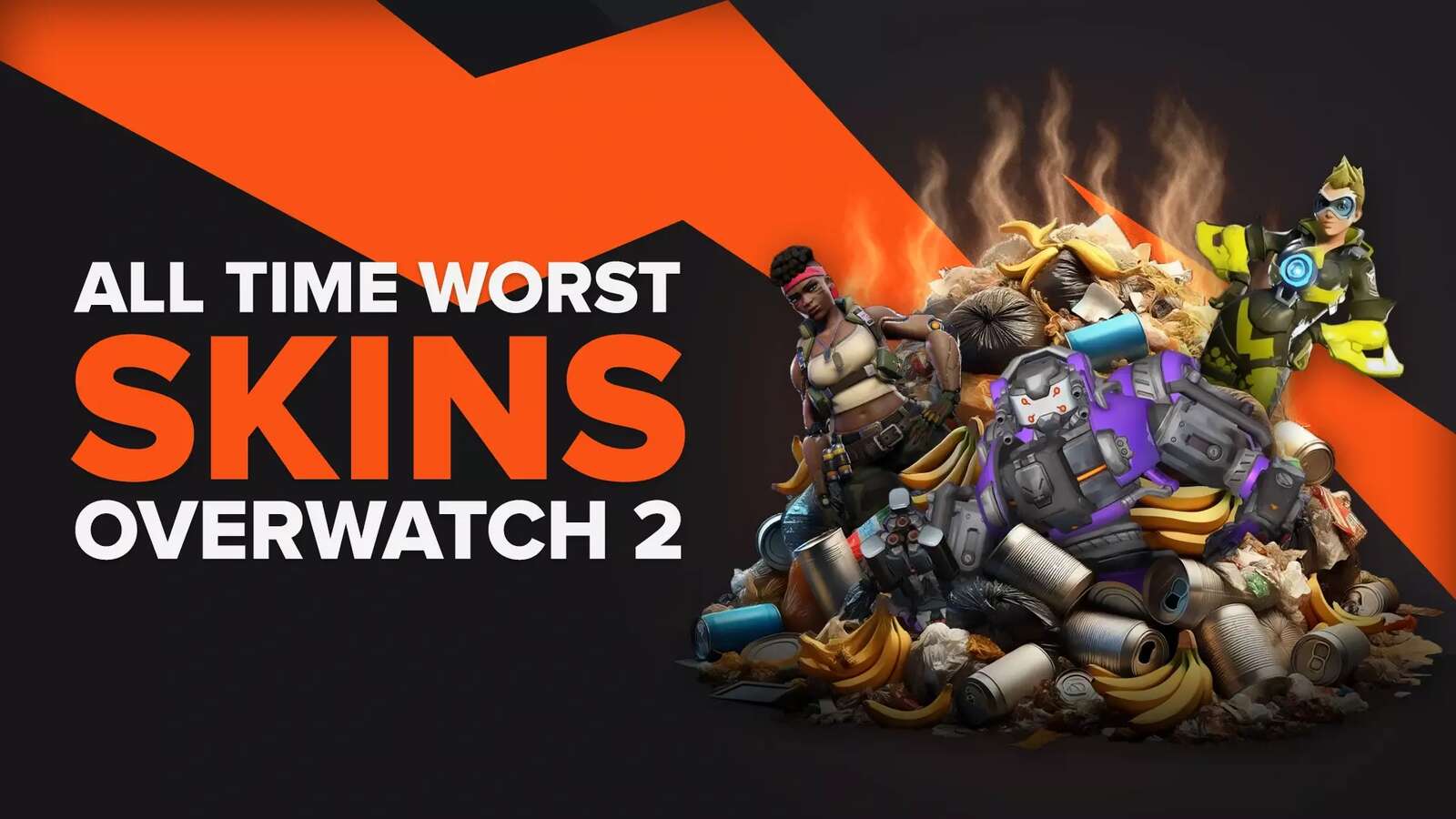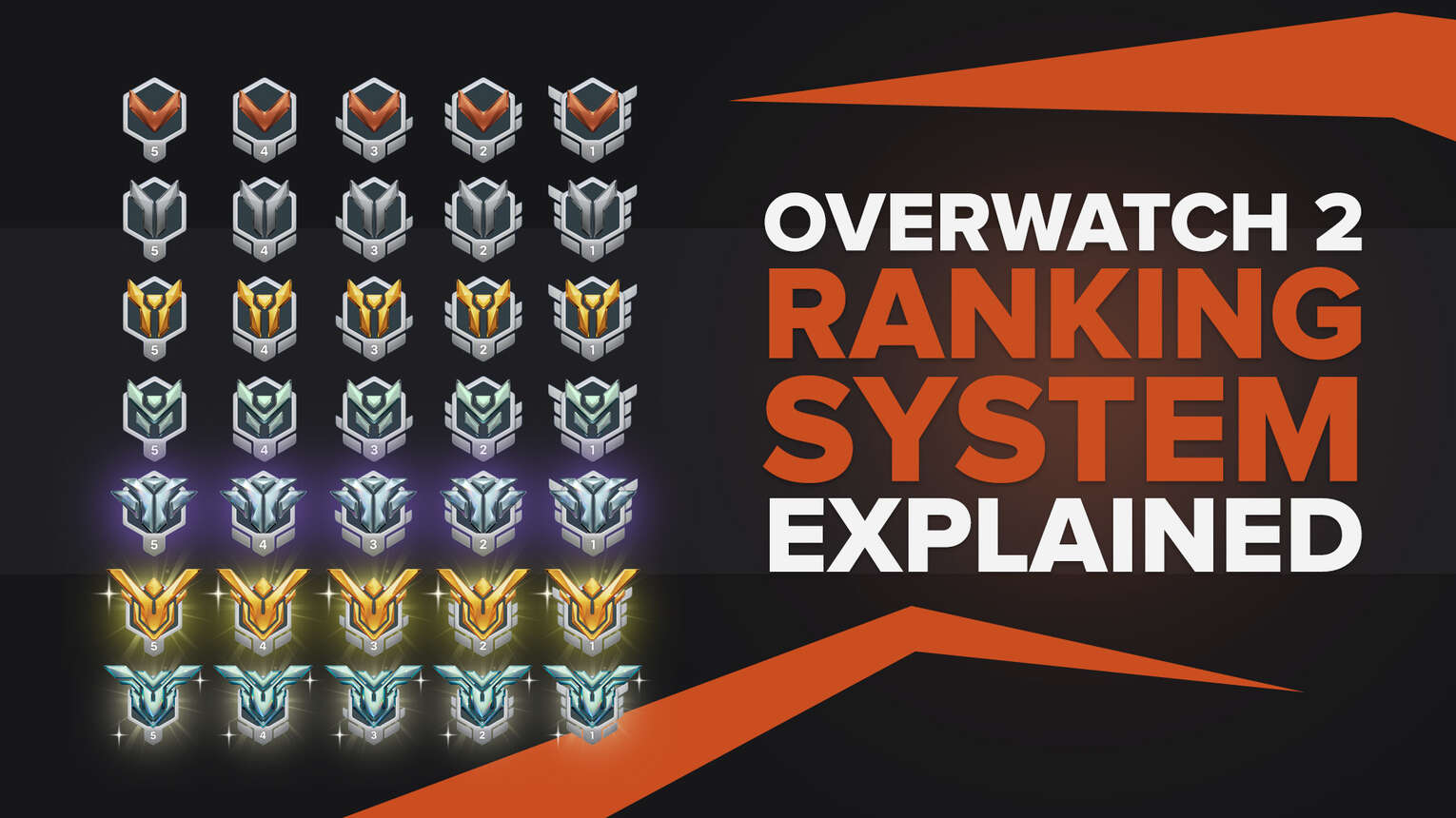
Competitive is a full skill-based mode where you must perform above perfection in order to win and climb, gaining a rank to show off to the world. After warming up, players should head over to competitive if they want a real, challenging Overwatch experience.
Overwatch's ranked system may be a little complicated to understand, so we have made this guide to help.
What is a rank in Overwatch 2?
A rank is a way of dividing players by skill. Your rank is decided by your performance inside Competitive, starting with your placement games. From thereon, your rank will show the rest of the players how skilled you are compared to them. Ranks will partially reset at the start of a new Competitive season, dropping you down divisions. Each competitive mode has its own rank, and Role Queue separates each role, meaning you can have a different Damage rank than your Support or Tank rank.
What is a division in Overwatch 2?
Ranks are divided into 5 divisions, to further separate players of different skill levels. The 5th division of a rank is its lowest division, and the 1st division is its highest. Divisions were not in the original Overwatch, but Blizzard implemented them as they are commonly found in other competitive games.
How many ranks exist in Overwatch 2?
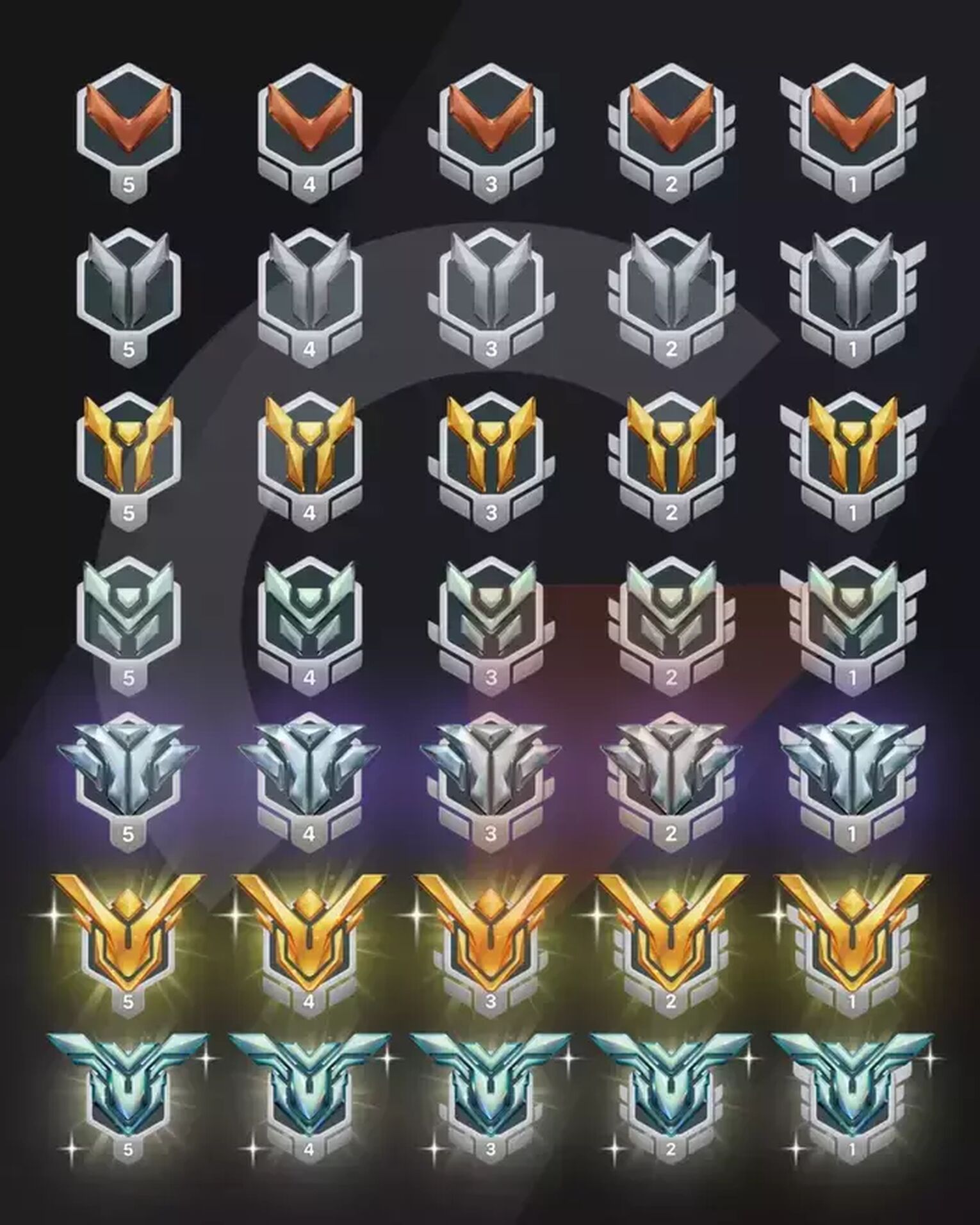
Overwatch 2 keeps the old ranks from its predecessor, in order, here are the ranks named from lowest to highest:
- Bronze
- Silver
- Gold
- Platinum
- Diamond
- Master
- Grandmaster
However, unlike Overwatch 1, all the ranks, or skill tiers, now have 5 divisions to further separate discrepancies in performance and quality in skill tiers. Division 5 is the lowest division, whereas Division 1 of a skill tier is its highest division. Finally you have Top 500. Top 500 is more of a title than a rank, as Top 500 players are almost always Grandmaster, but some can dip below into Masters. So, there are 7 skill tiers, and in total, 35 divisions.
Overwatch Rank Distribution
Here are all the ranks in Overwatch 2, ordered from lowest rank to highest rank, along with their distribution.
| Rank | Rank Icon | Rank Distribution |
| Bronze | 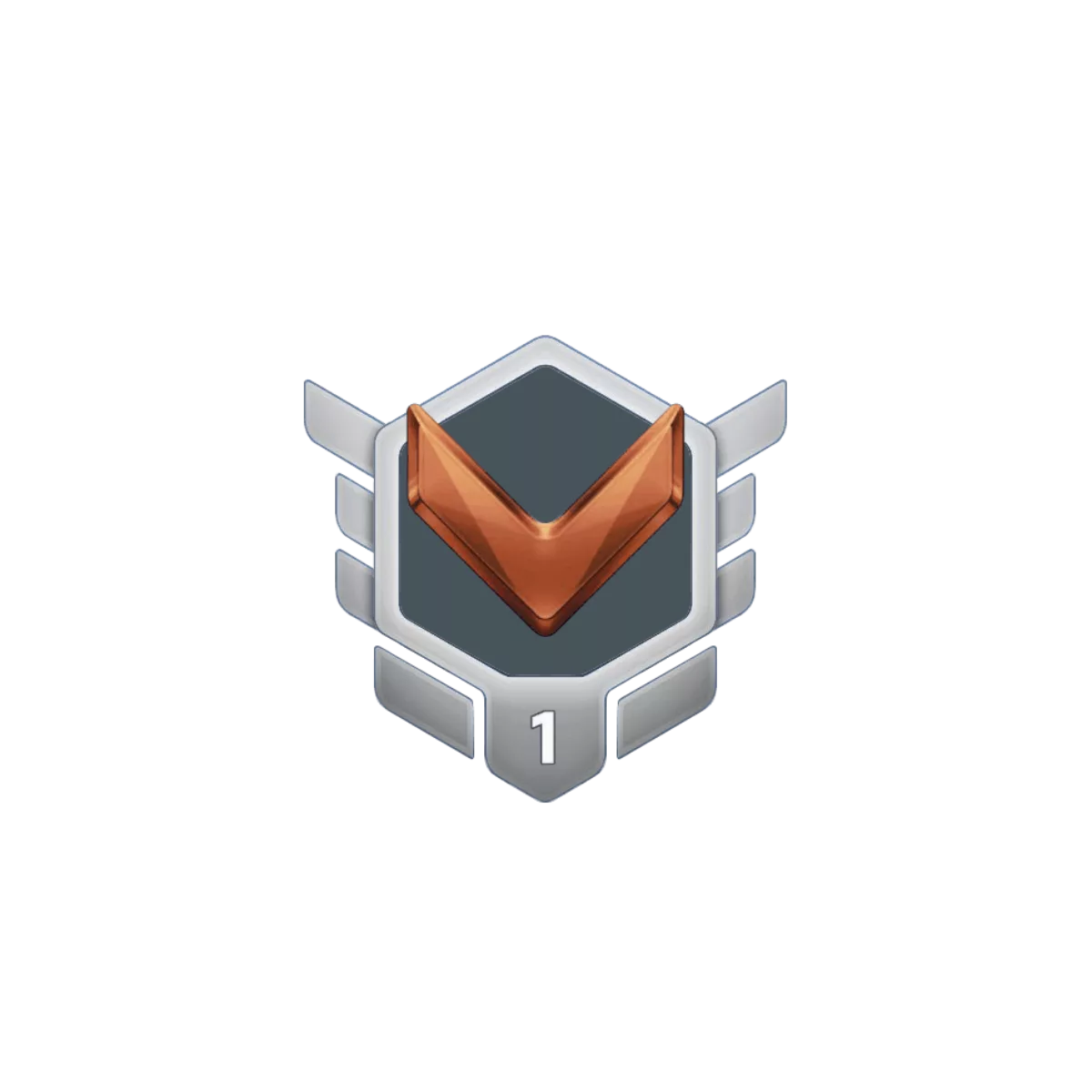 | 8% |
| Silver | 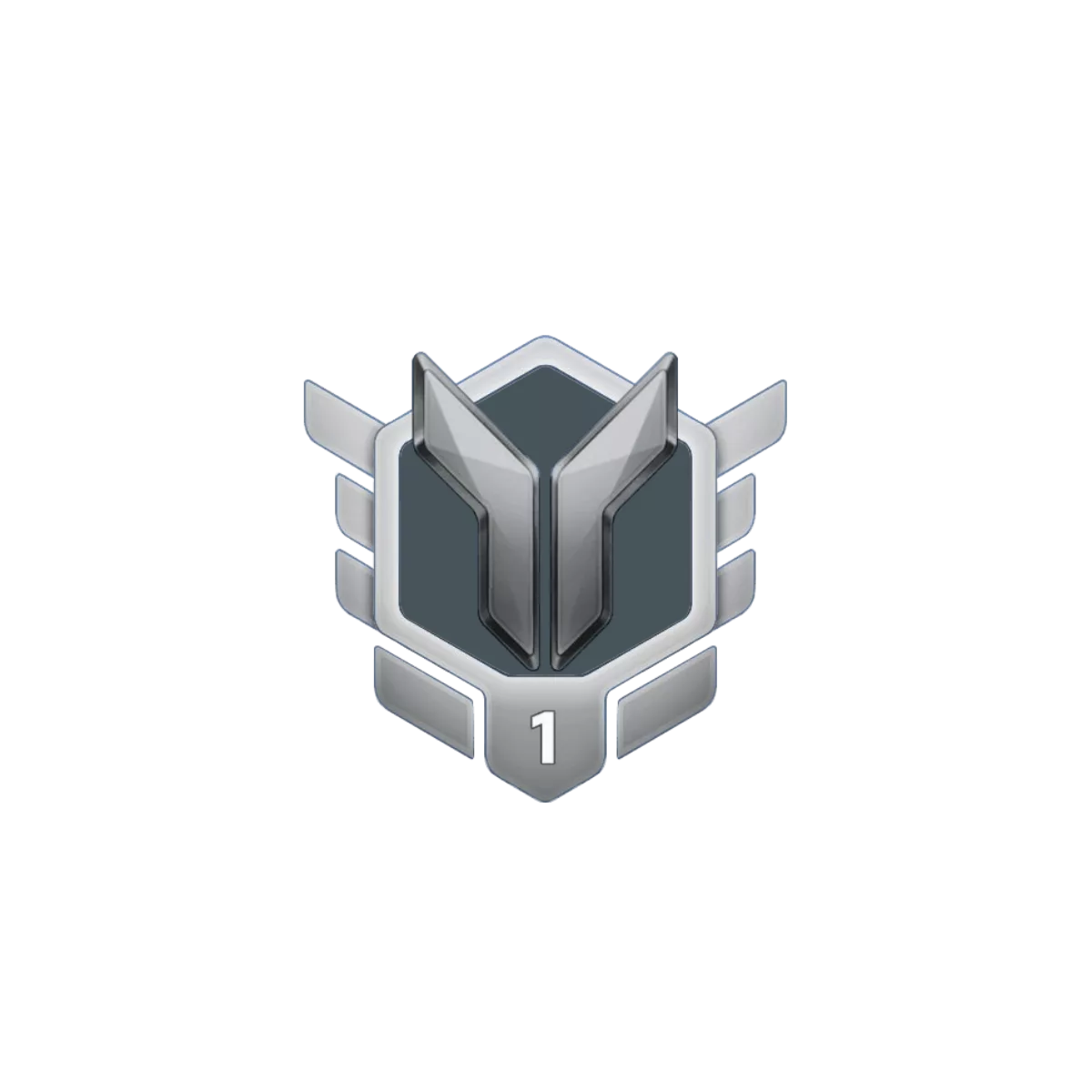 | 21% |
| Gold | 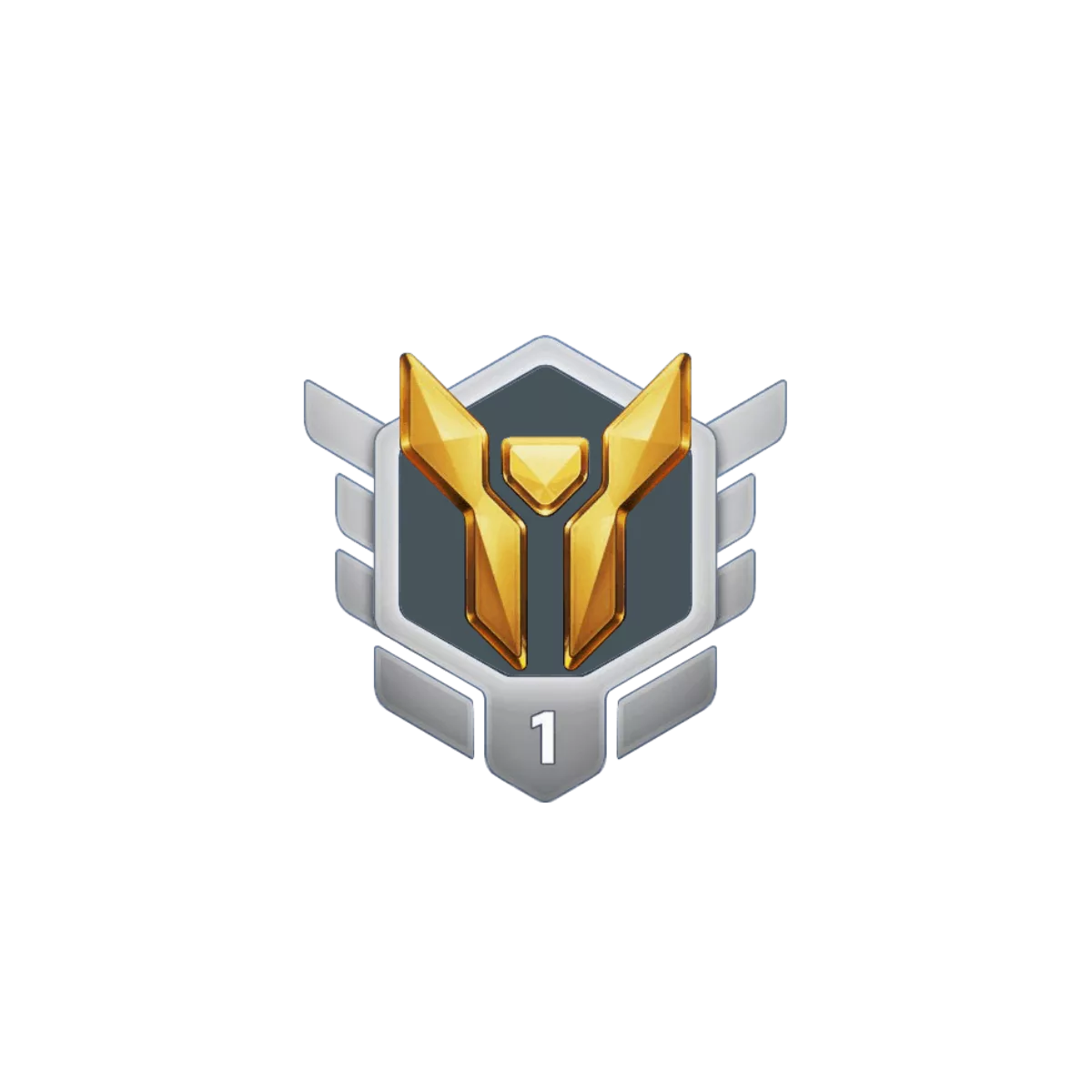 | 32% |
| Platinum | 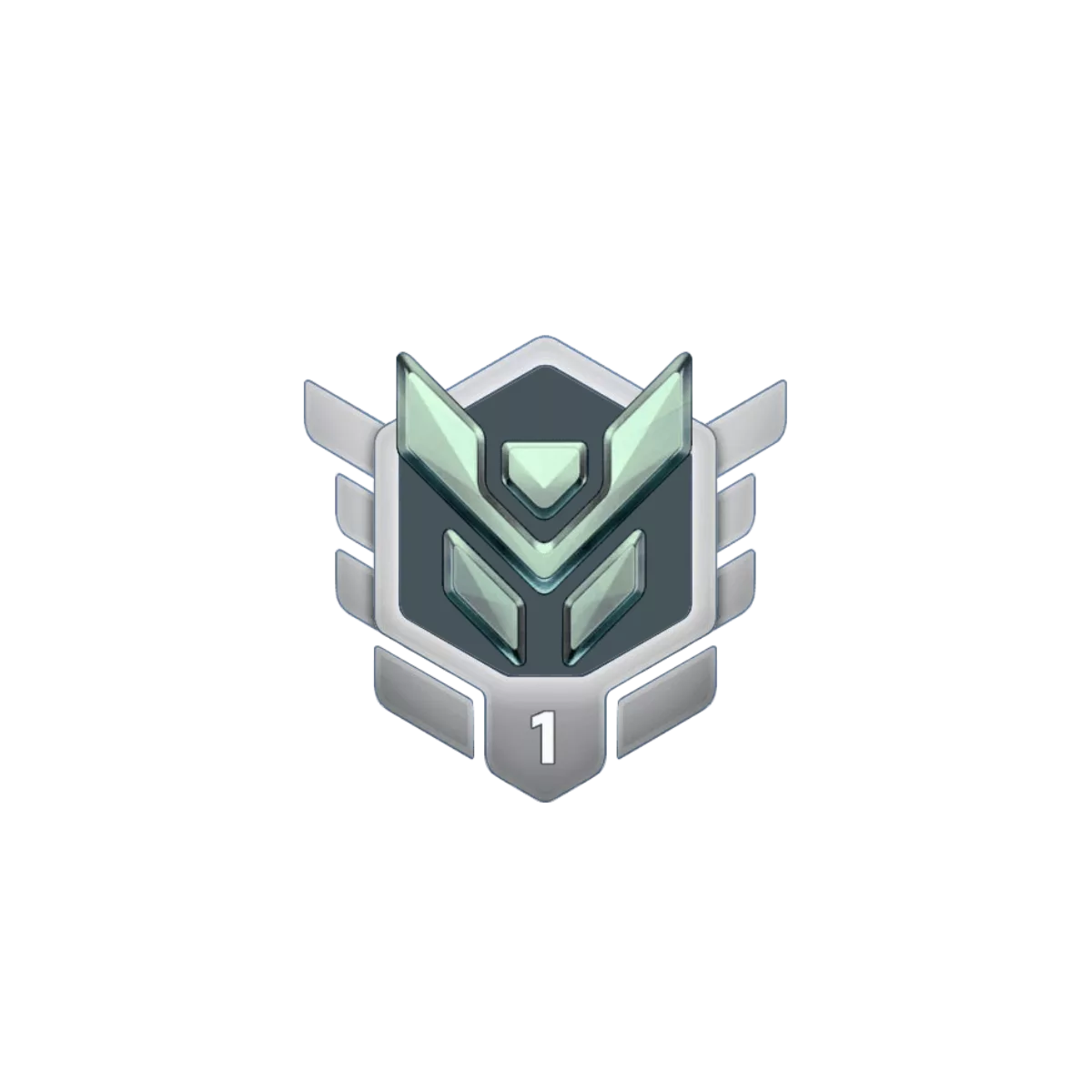 | 25% |
| Diamond | 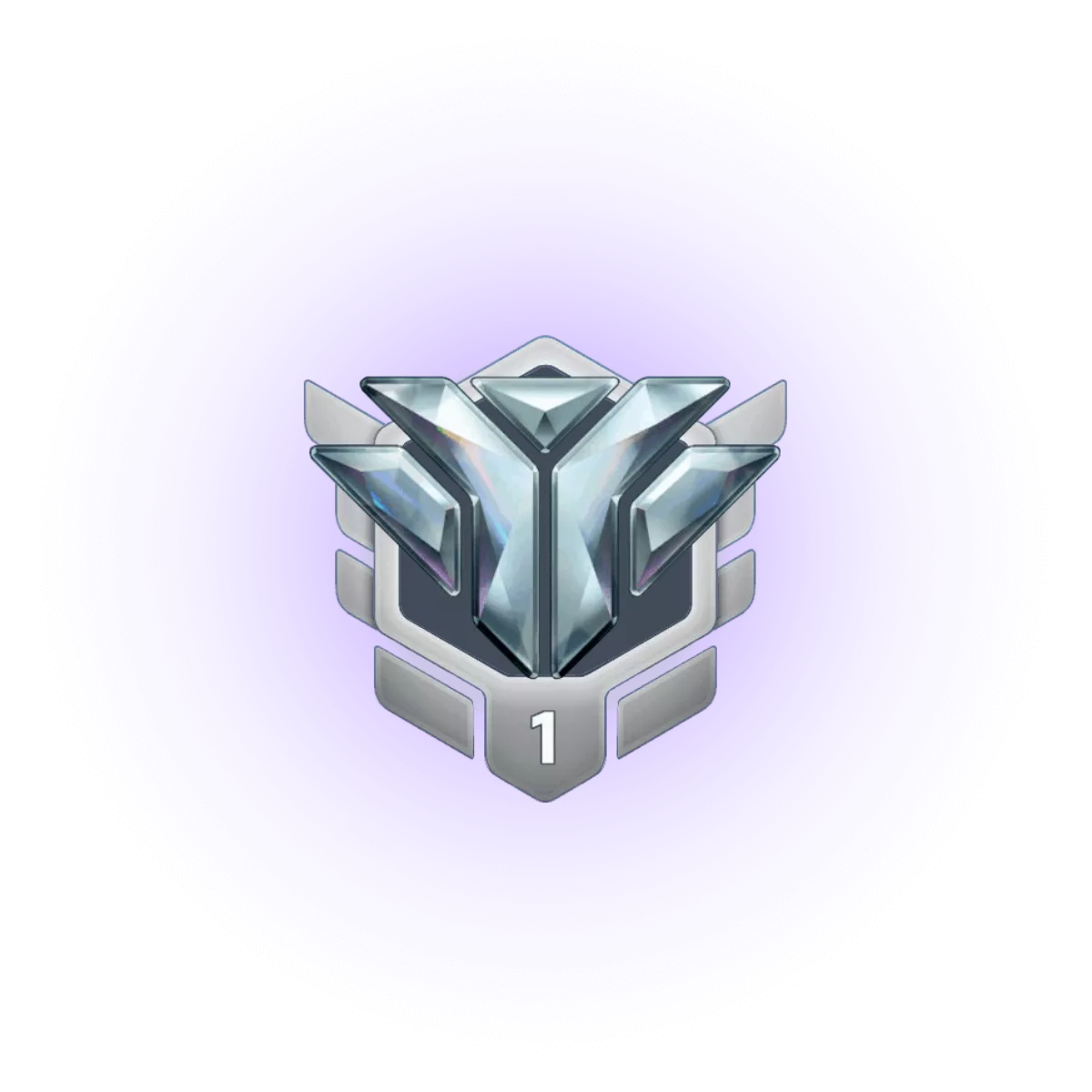 | 10% |
| Master | 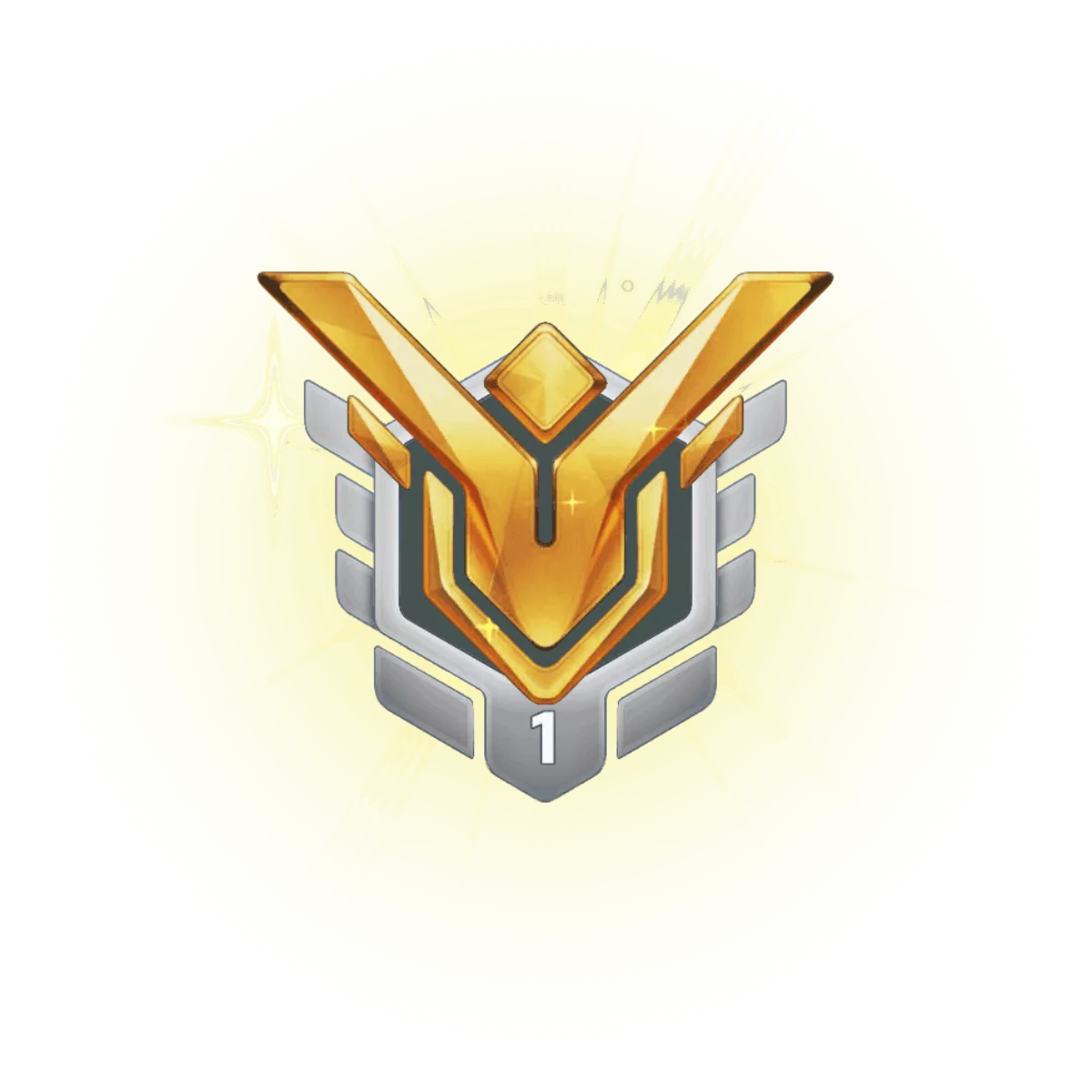 | 3% |
| Grandmaster | 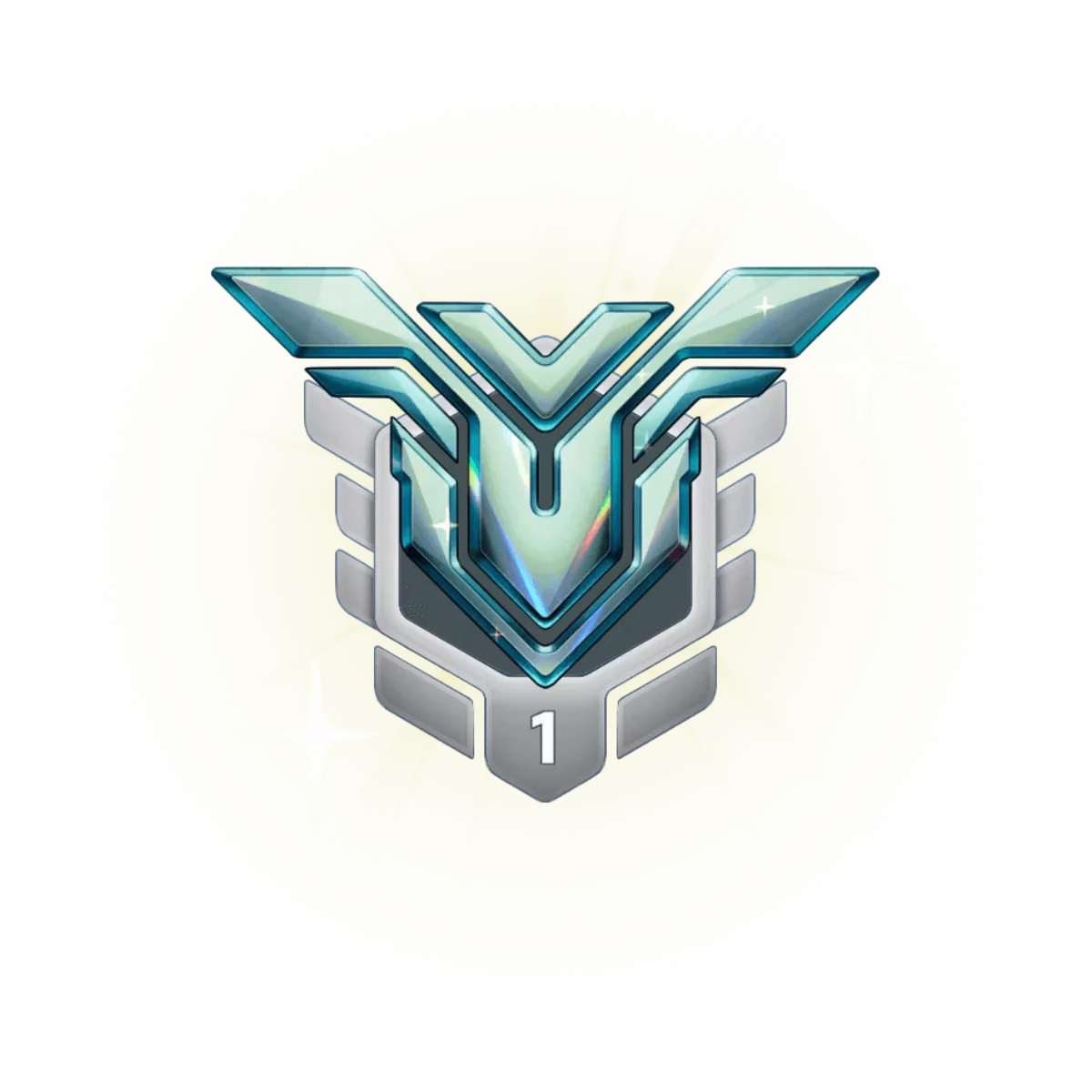 | 1% |
Rank distribution is very important for Competitive video games, as they allow to see if the game is balanced, and allow players to situate themselves amongst the rest of the players. As we can see, Gold holds the biggest majority of players in Overwatch 2. Here you are considered the average player, along with Platinum, which holds a quarter of the player base. So what would be considered an impressive rank?
Masters and above make up the top 4% of the players in Overwatch 2. Therefore Masters is the ideal rank to get to if you want to aspire to play professionally. The true best rank is of course Grandmasters, where the top 1% of Overwatch players fight for the Top 500 title. Reach Grandmasters and you will have a great shot to go even further in Overwatch.
How do I unlock Competitive play?
Veterans of Overwatch will have Competitive play already unlocked. New players however, will have to win 50 Quick Play games to unlock competitive play.
How do I get a rank?
Competitive mode is divided into Role Queue and Open Queue. Role Queue allows you to pre-select a role that won't change mid-game, whereas Open Queue lets you change role and character at will. After choosing your Competitive mode, and a hopefully short queue, you will be placed in a competitive game with and against players that Blizzard deem to be of a similar skill. This is your first placement game.
Differently to the original Overwatch, the sequel has developed a new system for Competitive placement matches. You must now win 7 competitive games, or lose 20 games to receive your very first rank. This system is also the deciding factor on your rank after your placement. After every 7 wins or 20 losses, your skill rating and rank will climb or decrease. To rank up fast, I suggest checking our guide on the subject.
How is my rank decided?
Ranks are decided by several factors:
- MMR, Matchmaking Rating, which is a secret value that only developers can see, is your true skill rating. Game developers use MMR to balance games and rankings, as well as how much or how little a player may climb. This MMR will change based on many factors, including the factors in this list.
- Your teammates' rank. If your teammates are lower ranked than you, you are expected to perform above them, or you won't gain as much of an increase to your MMR from a win, and thus to your rank.
- Your opponents' rank. If the enemies are higher ranked than you, a loss won't tank your MMR as much as a loss versus players of lower skill.
- Your performance, of course. If you play well, you will climb in MMR, which will respectively let you climb to a higher skill tier faster.
MMR is dependent on many factors, but in short it will calculate how well you are doing every game. If you have a higher MMR than your skill tier, you will climb faster than other players, and losses won't be as impactful. If you have a lower MMR than your skill tier, you will climb much slower, and will drop faster.
Will my MMR reset or change?
MMR will partially decay after you are away from the game for a while. So if you take a break, you won't be facing the hard battles you're used to, and will have a simpler time easing back into the game.
How do I increase my MMR?
MMR is only increased through great performances and most importantly, wins. MMR is decided throughout your whole Competitive experience, so you can't escape your old games, and several bad games can tank your MMR severely. That's why it's important to play consistently and to not burn out.
Who can I queue with?
Queue restrictions depend on your skill tier. Bronze to Diamond players can group within 2 skill tiers. Masters can only group within 1 skill tier. Grandmasters can only group within 3 divisions, and can only queue by themselves or with one teammate. This is to prevent high skilled players from stacking up in a team and abusing their synergy versus randomly placed enemies, as well as avoiding boosting.
Leaver Penalties in Overwatch 2's Competitive Mode
Competitive Play enacts severe penalties for leavers or dodgers, as Competitive is a serious game mode. Furthermore, queue times can take a while at higher ranks, though Blizzard has created a Priority Queue to combat dodgers. The penalties are such:
- If you leave a game, or are kicked for inactivity, you can't play any other game until the match has concluded. If you join back before one minute has passed, you can avoid penalties.
- You will receive a 75% experience penalty to the Battle Pass.
- You will be prevented from playing Competitive Mode for a certain duration. This duration increases if you have dodged or left games in the past, ramping up in severity. This can even lead to a ban for the rest of the Competitive season, and can even remove your Competitive rewards from said season.
Overwatch 2's Rank Leaderboard
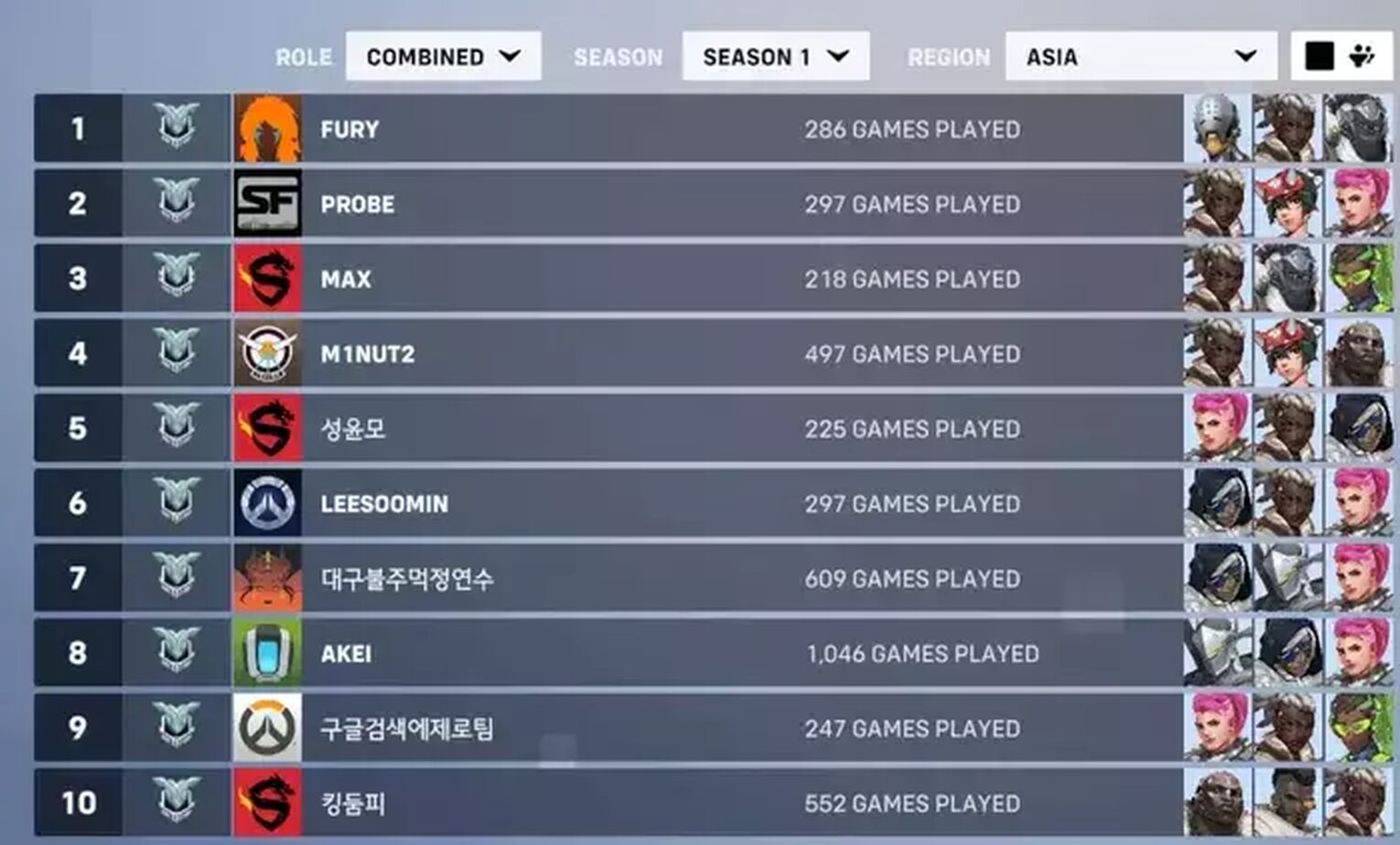
If you are in Top 500, you can find yourself on Overwatch 2's leaderboard. After being in a high enough rank (Usually Grandmaster 1), you must complete 25 Role Queue games, or 50 Open Queue games, to be eligible for Top 500. This leaderboard shows games played, most played heroes, and their ranking in top 500. It can be filtered by role, season, region, and you can even select a buttonto show a leaderboard that ranks you amongst all your friends.
What benefits come from ranks?
If the thrill of winning an exhilarating battle in a sweaty 5v5 doesn't excite you, ranks also come with their benefits. First of all, a shiny badge you can flex to your friends, teammates and enemies (as long as they aren't higher ranked), is a boon any player should thrive for.
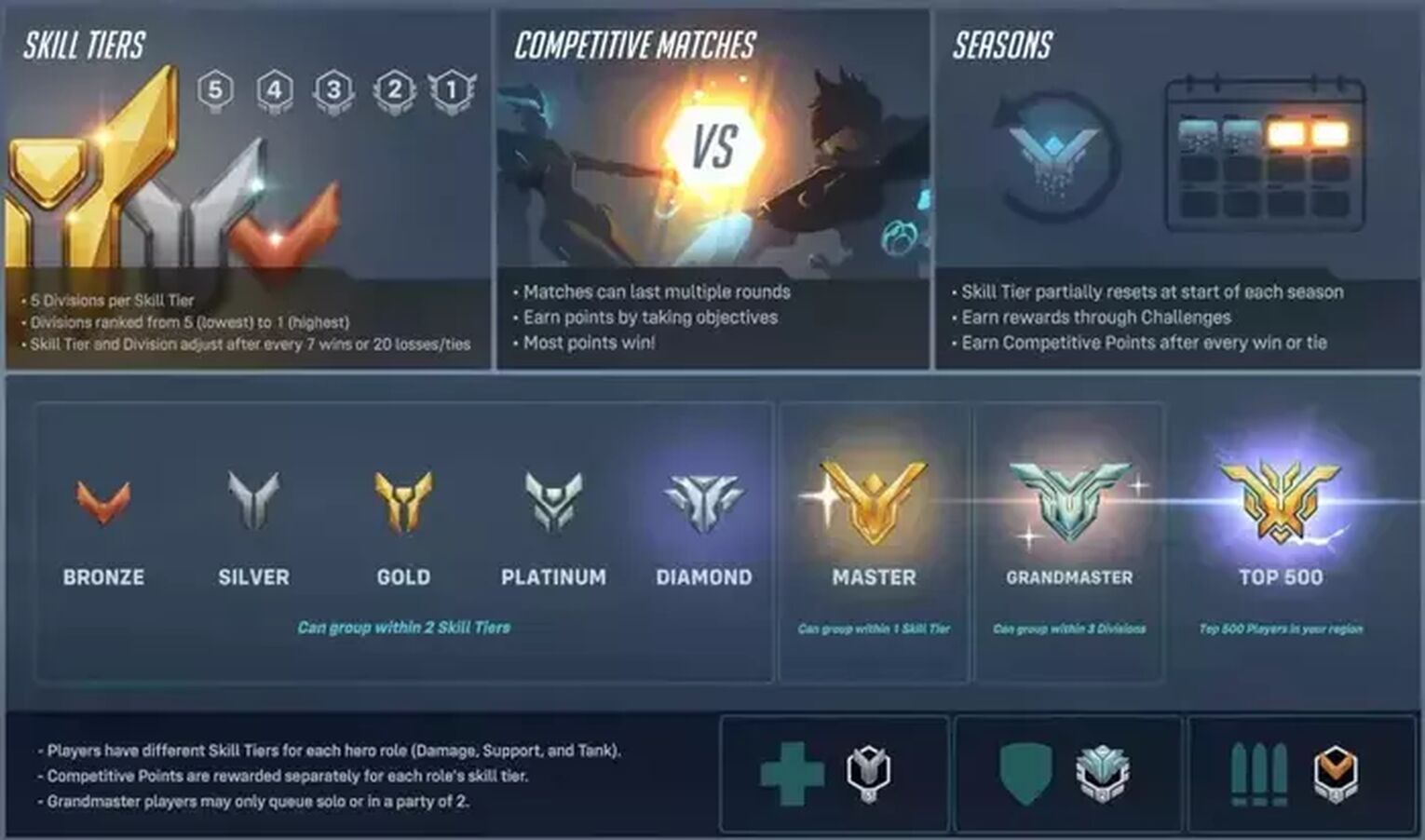
The second benefit is competitive points, a game-based and rank-based reward. At 3000 competitive points, you can ultimately purchase a golden skin for a character's weapons, modifying every weapon based part of their kit into a golden version of itself. These will shine bright on the battlefield, showing off your competitive prowess to all in-game.
Now that you know everything there is about ranks in Overwatch 2, queue up, and aim for that sweet Top 500 spot.


.svg)


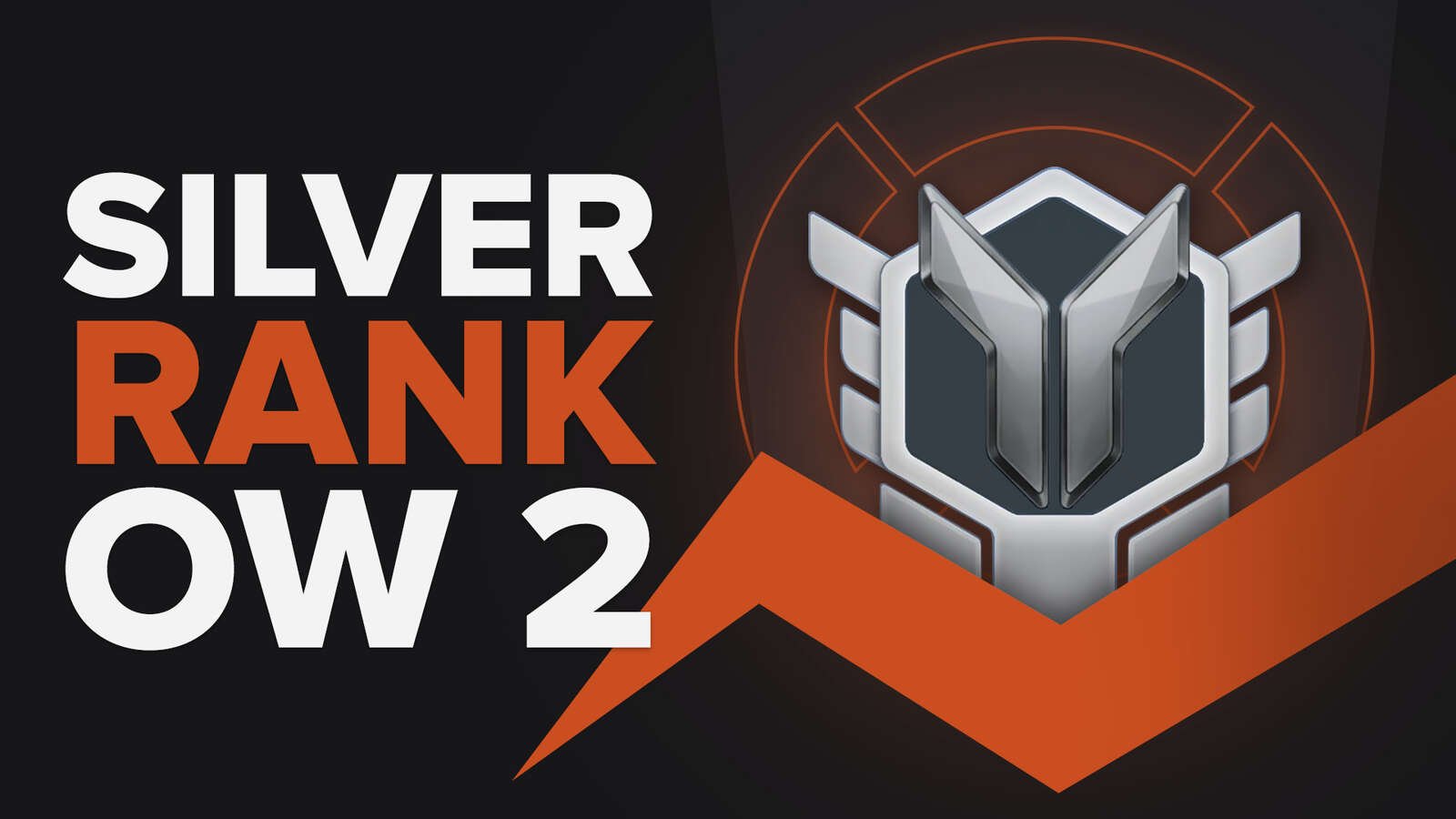
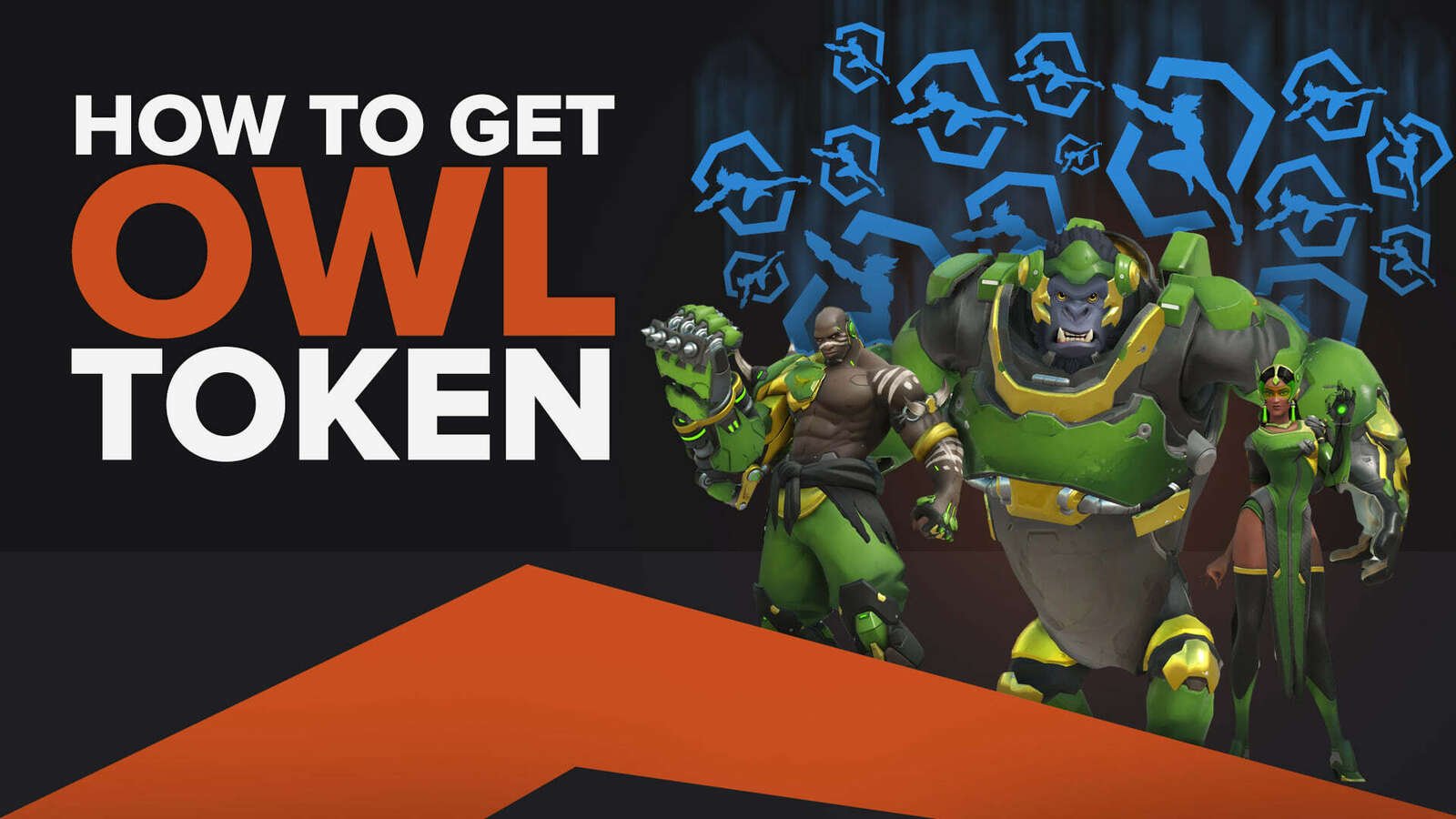
![10 Hardest Heroes to Play in Overwatch 2 [Ranked]](https://theglobalgaming.com/assets/images/_generated/thumbnails/3761564/hardest-heroes-to-play-overwatch_03b5a9d7fb07984fa16e839d57c21b54.jpeg)
